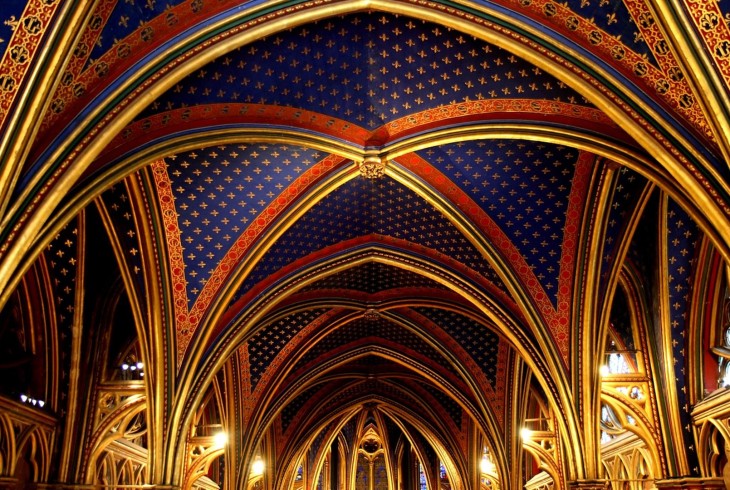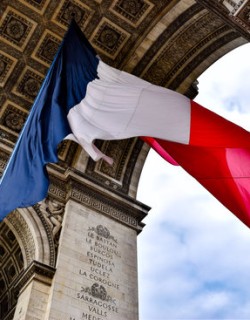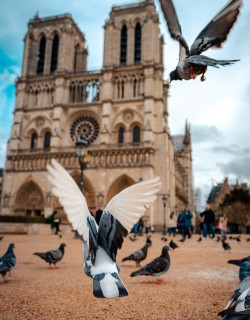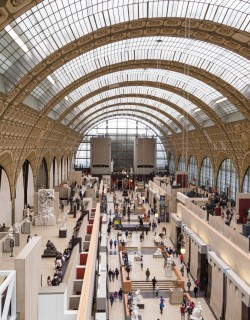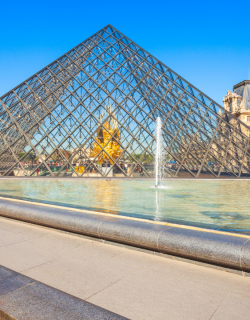To the horror of the whole world, on the 15th of April 2019, the roof of one of the greatest places of worship in all of Christendom burned. We all held our breath as first Viollet-le-Duc’s sensuous lead-sheathed wooden spire disappeared in a fog of flames and toxic fumes, soon to be followed by most of the roof. In addition to the competence and courage of Paris’ fire brigade, it was the building’s brilliant design that kept the walls up long enough for the firefighters to complete their work, saving the walls, the façade and the stately twin bell towers.

That such masterful engineering was possible nearly 900 years ago, during a period still too commonly referred to as the Dark Ages, is astonishing to many people. Perhaps, though, we just don’t give the great medieval minds enough credit.
Ethereal Elements
Nothing comes from nothing, of course, and signs of things to come were already appearing in Norman architecture, on both sides of the English Channel, in the late 11th century. However, the first structure to systematically incorporate all three of the fundamental elements of what would come to be known as Gothic – pointed arches, rib vaults and buttresses – was the royal abbey church of Saint-Denis (1133-1144). Notre-Dame de Paris was right on its heels, with construction beginning in 1160. While many people of a romantic mindset associate the Gothic aesthetic with dark spaces and deep mystery, the intent of its authors was precisely the opposite. Compared to the thick, squat walls and small windows of the preceding Romanesque style, the new Gothic techniques permitted soaring thin walls and enormous openings for the bright light of day to enter through polychromatic stained glass. This opus francigenum, or Frankish work, would dominate ecclesiastical architecture and aristocratic taste in most of Europe for the next 400 years.
Notre Dame is a shining example of this majestic architectural style. Paris' cathedral will be closed until Spring of 2024, so here are some other marvels of medieval ecclesiastical architecture to feast your eyes on.
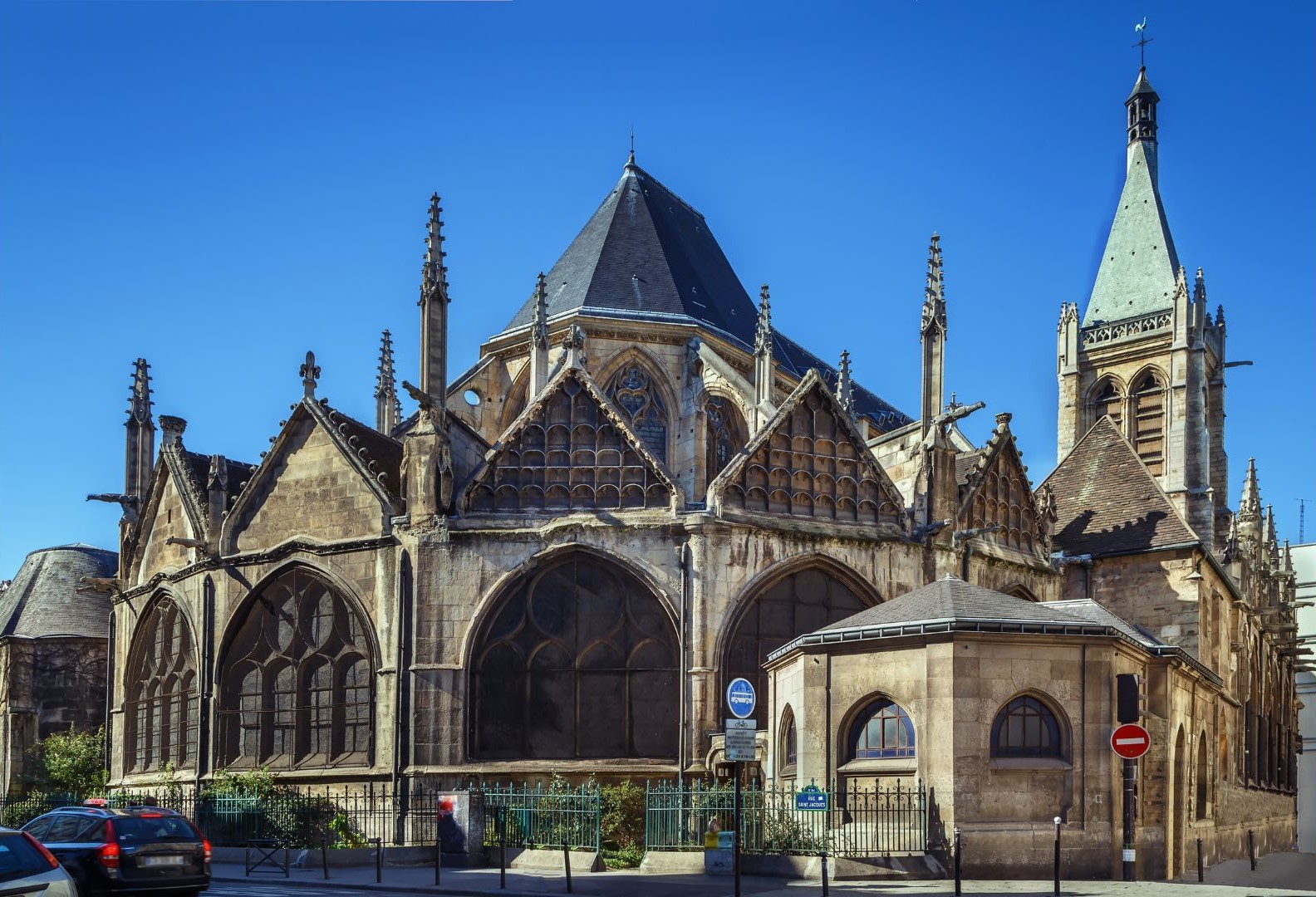
SAINT-DENIS
Located in a northern suburb of Paris, this resting place of 43 kings and 32 queens is easily reachable by subway. Just a decade after the legalization of Christianity in 313, an early shrine was built on the spot held to be the tomb of Saint Denis, a mid-third-century missionary martyr decapitated on Montmartre by the Roman authorities. Expanded into a basilica around the turn of the 6th century, it was established as a Benedictine monastery in the 620s by the Frankish king Dagobert I. The Carolingians oversaw the rebuilding of the old church, with work beginning at the order of Pippin the Short, and the consecration was attended by Charlemagne himself. Over time, the abbey church of Saint-Denis became the preferred location for the tombs of the Frankish monarchs, a trend which settled into established practice with the arrival of the Capetian dynasty to the throne in the late 10th century.
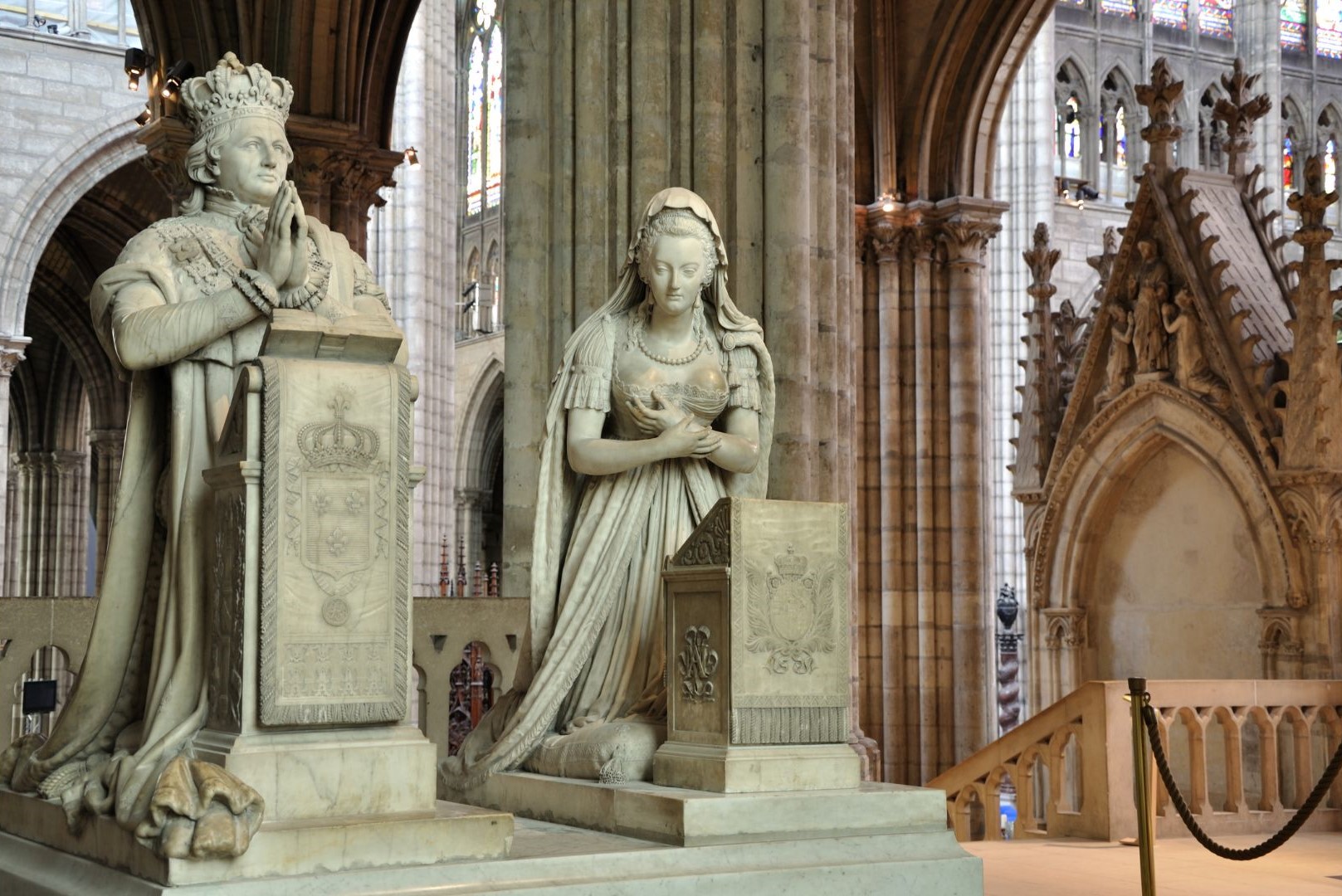
A century later, a man known only by one name – Suger – was born. At the tender age of 10, he was sent as an oblate to the abbey of Saint-Denis, where he met the boy who would become King Louis VI. Suger would serve both him and his successor Louis VII as trusted advisor and administrator. As abbot of Saint-Denis, Suger set about modernizing and amplifying the abbey’s church. Perhaps out of respect for Charlemagne, he left the heart of the structure, the nave, exactly as it was. The façade in front and the apse at the back, though, would be utterly transformed.
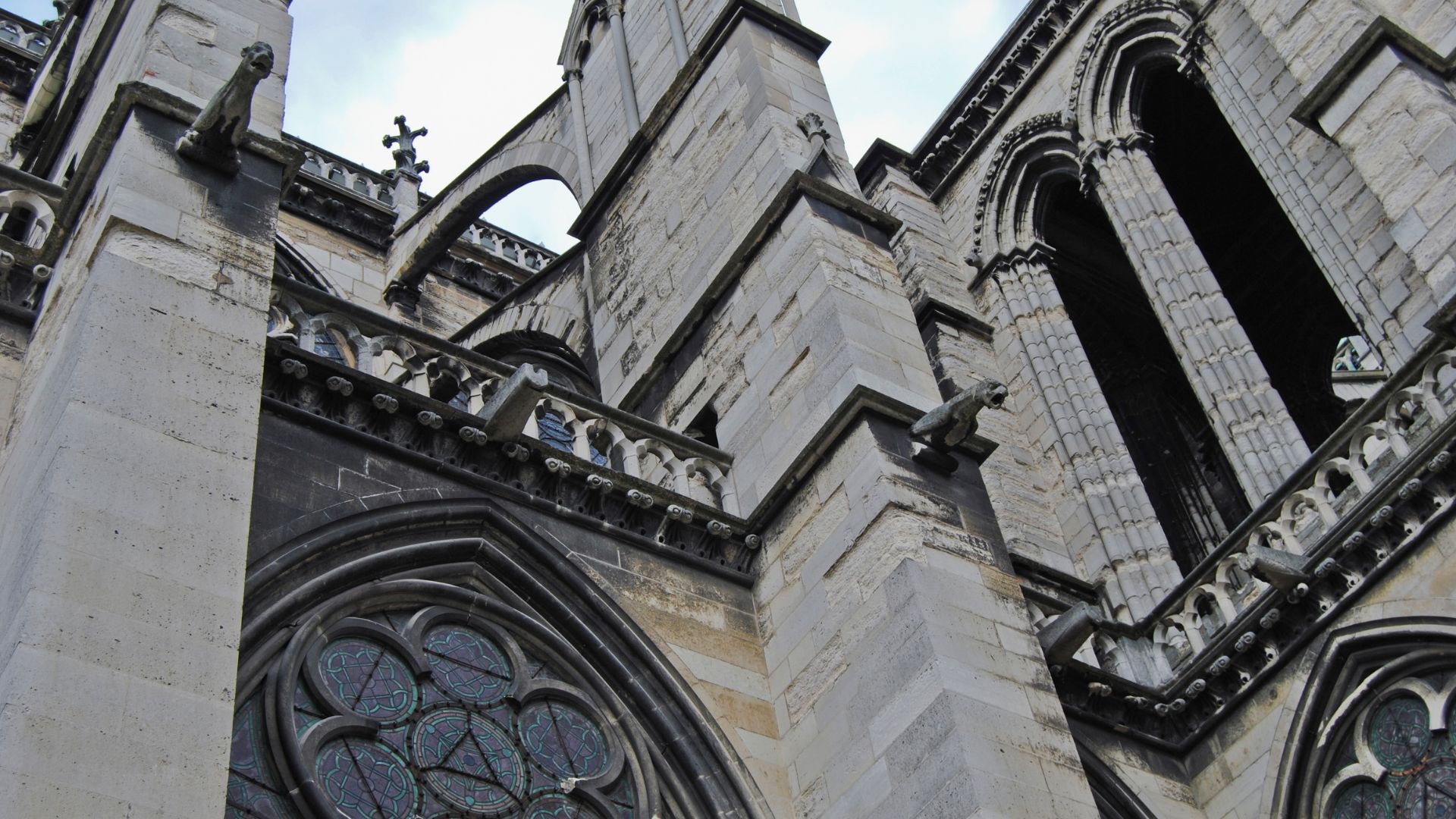
Some historians believe that Abbot Suger took the Arch of Constantine in Rome as his inspiration for the façade, creating a large central arched doorway flanked by a smaller opening on each side. This not only solved the problem of congestion at the entrance but also allowed more light into the space. This was augmented by a great round rosette window, the first of its kind, setting a trend that would dazzle priests and prelates, princes and pilgrims, for centuries to come.
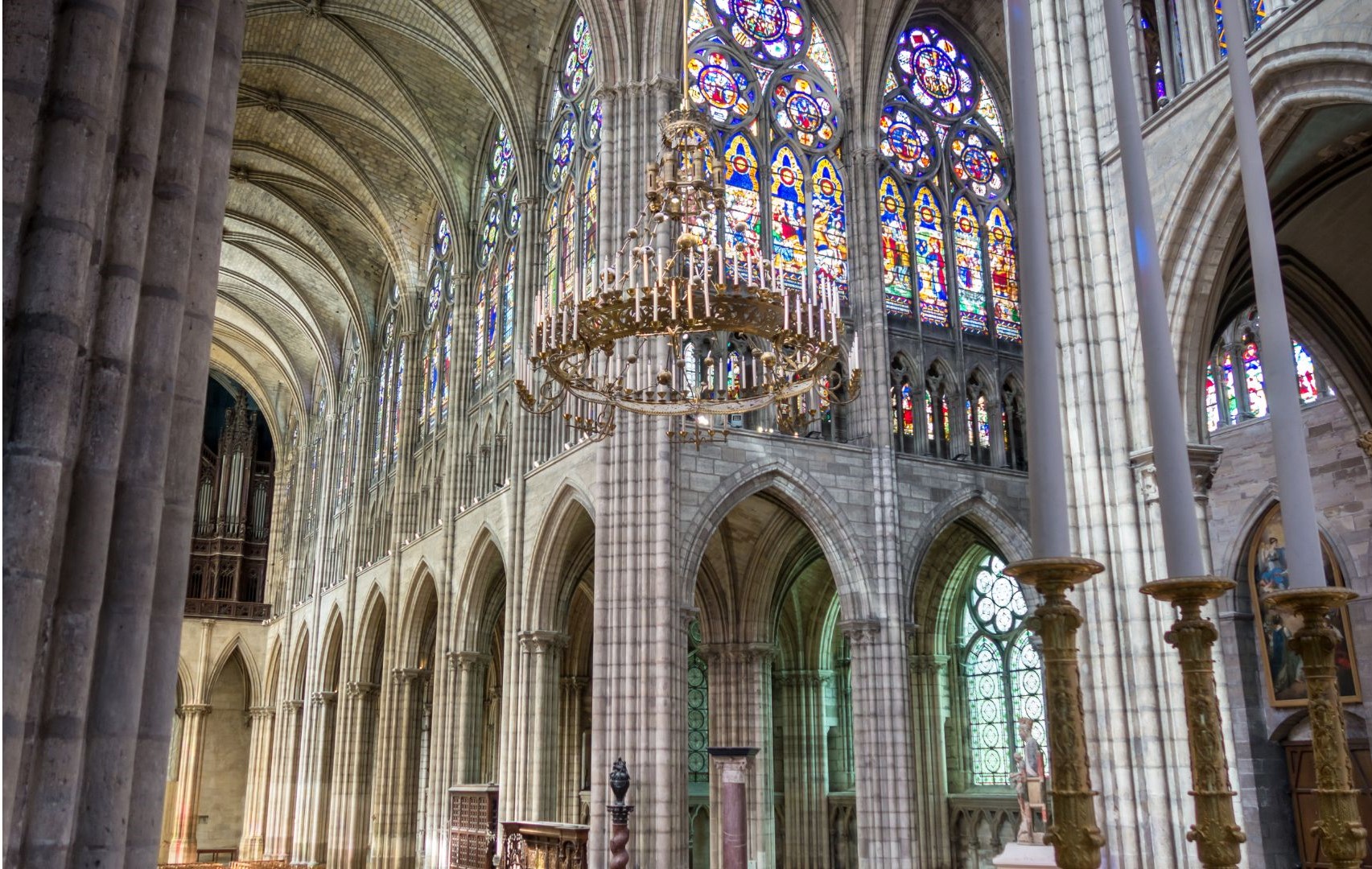
Practical Info:
Metro Line 13, Station Basilique de Saint-Denis
From April to September:
Monday to Saturday 10:00am - 6:15pm (last entry at 5:45pm)
Sunday 12:00am - 6:15pm (last entry at 5:45pm)
From October to March:
Monday to Saturday 10:00am - 5:15pm (last entry at 4:45)
Sunday 12:00am - 5:15pm (last entry at 4:45)
The royal necropolis is closed during religious services AND on the 1st of January, the 1st of May and the 25th of December. It is located inside a church celebrating religious services, with occasional exceptional closures. Check the website for details and updates
SAINT-SEVERIN
With the establishment of the University of Paris by King Philip Augustus at the end of the 12th century, the Ile de la Cité rapidly became overcrowded and overpriced. Students on a budget found cheaper lodgings (and cheaper wine) on the Left Bank. The church of Saint-Sévérin (along with nearby Saint-Julien-le-Pauvre) became the go-to parish for the young people engaged in academic pursuits, as well as the preferred venue for the university’s general assemblies. In the early 1230s it was decided that a larger structure was required, one that reflected the glory and grandeur of Paris’ king, her culture, her economy and her university.

Work stalled during the Hundred Years’ War, but the end of hostilities and France’s near total victory brought a post-war economic boom. By this time, style and taste demanded an even more sensuous spin, producing one of Europe’s finest examples of Gothique flamboyant architecture.
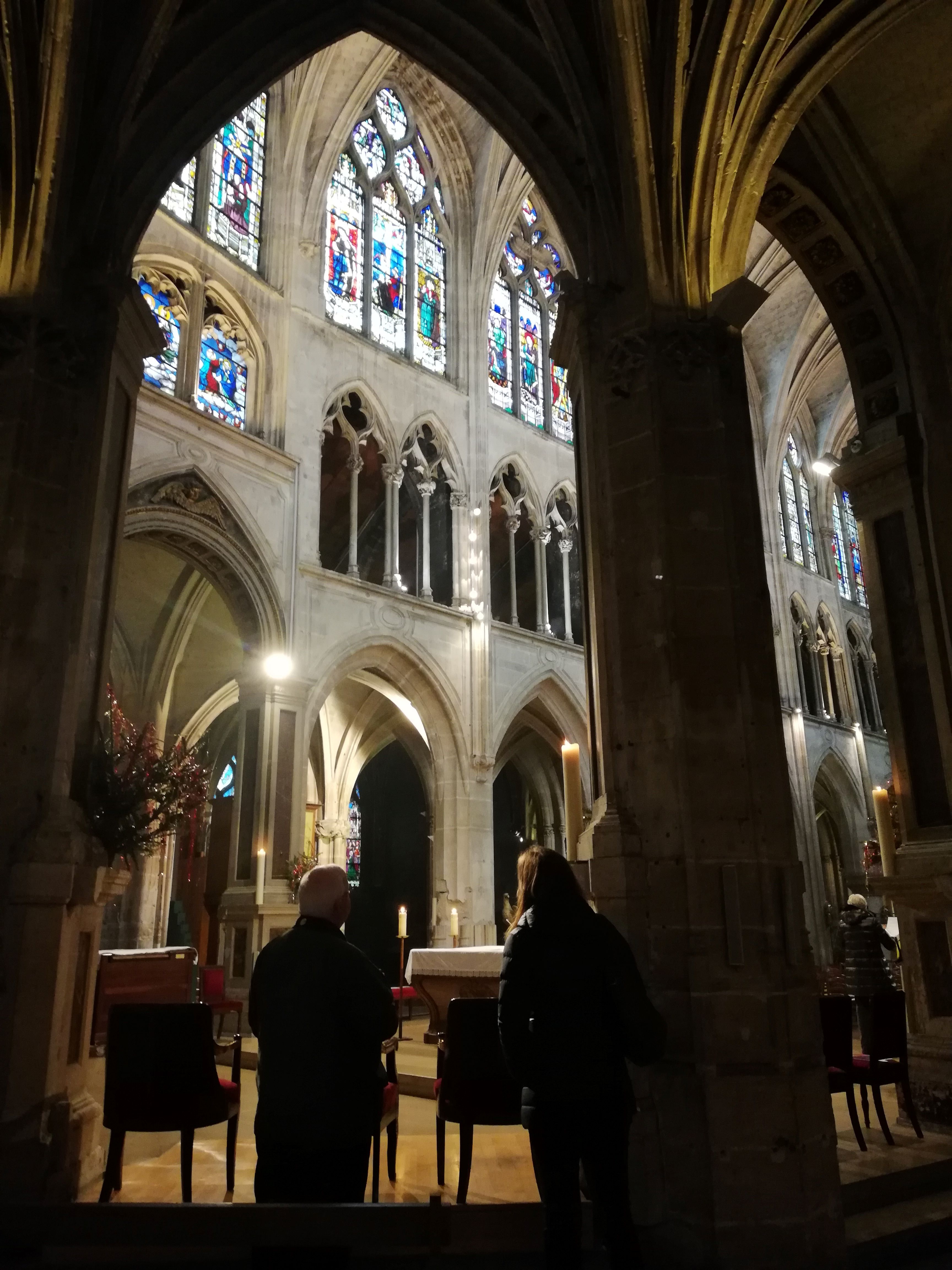
You can feel the progression as you advance along the central nave, passing by twisted columns that spread up into the arched vaults like so many surrealist palm trees. The soaring ceilings, the soft light and the undulating curves of creamy cascading stone create an atmosphere that is both romantic and majestic, evoking the true timbre of the Gothic spirit.
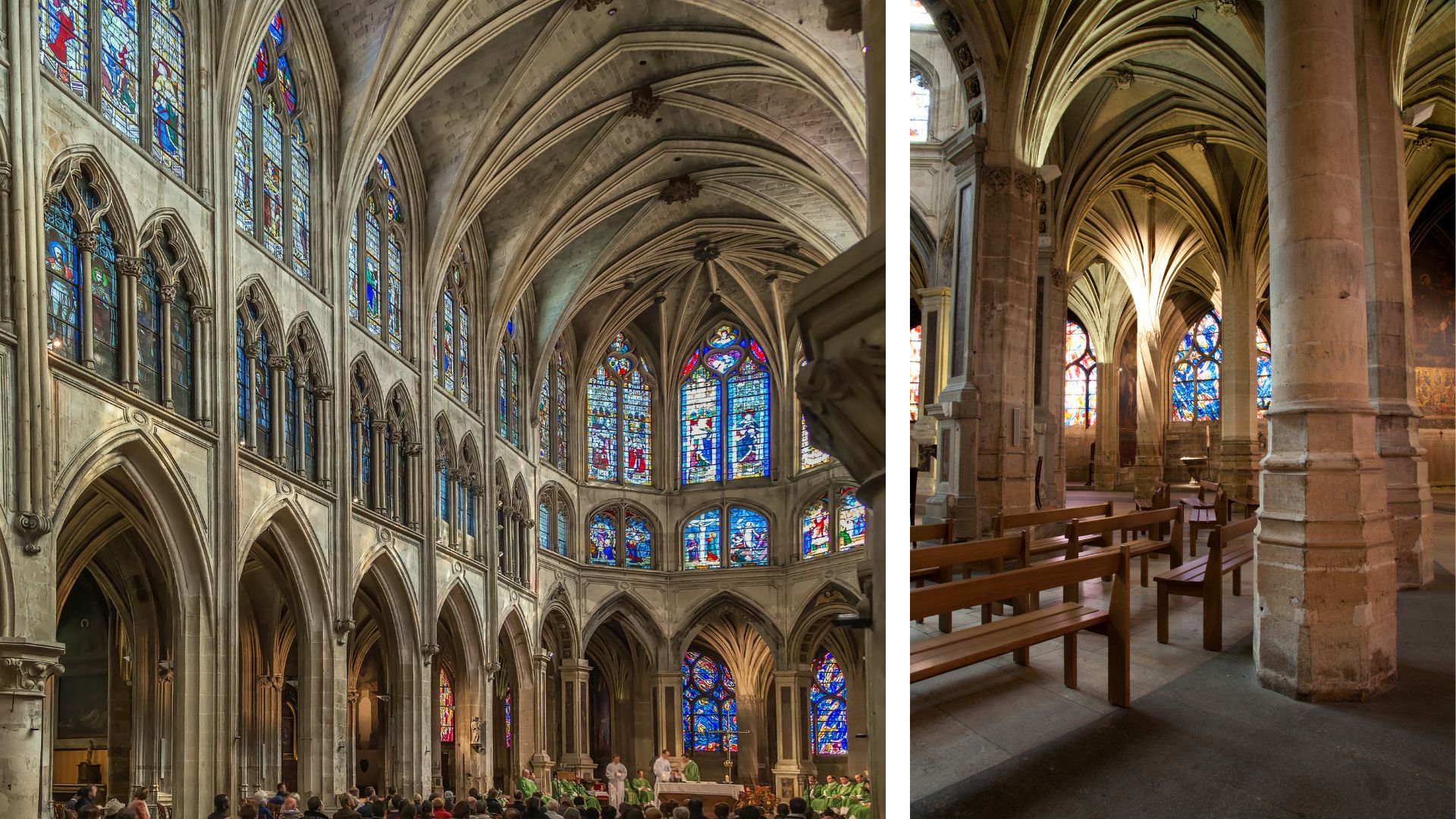
Take a few moments to pop out into the charnier. In medieval times, unidentified bodies found in the area during times of pestilence, plague and civil unrest were laid out here before burial, in hopes that someone might come to claim them. Now it is a quiet restful spot, an oasis of peace in the heart of the busy city.

Practical Information
Open Mon-Sat 9:30 am to 7:30 pm, Sun 9:00 am to 8:00 pm
Rue des Prêtres Saint-Sévérin (Latin Quarter)
THE SAINTE-CHAPELLE
A wonder of medieval artistry, constituting the most extensive collection of 13th-century stained glass in all of Europe, the Sainte-Chapelle was erected at the order of King Louis IX (Saint Louis) and consecrated in 1248. It was built to house relics associated with the Passion of Christ, including the nails, the sponge, the shroud, and most notably the Holy Grail and the Crown of Thorns.

Destined for use by the royal household, the Sainte-Chapelle rises on two levels. The lower level was intended for use by the servants, attendants, and various courtiers. Just 21 feet high, this ground-level space almost seems like a crypt. The mood of mystery is augmented by the ceilings of royal blue festooned with gold stars, almost as though you were looking up at the night sky. The vaulting is extravagant, each segment defined by elaborate gilded ribbing.

Access to the upper level is provided by a very narrow spiral stone stairway. Emerging into the upper chapel gives the impression that you have left the earthly realm and are being received by the heavenly host. The windows are the walls here: 15 panels, each 50 feet high, of brilliantly colored glass recount episodes from the Old and New Testaments, telling the tale of all the earth, from Creation to the arrival of the holy relics in Paris. This is engineering at the service of artistry, architecture as spiritual experience. Ethereal and inspiring, the Sainte-Chapelle is perhaps the most perfect example of High Gothic idealism and imagination in all the continent.
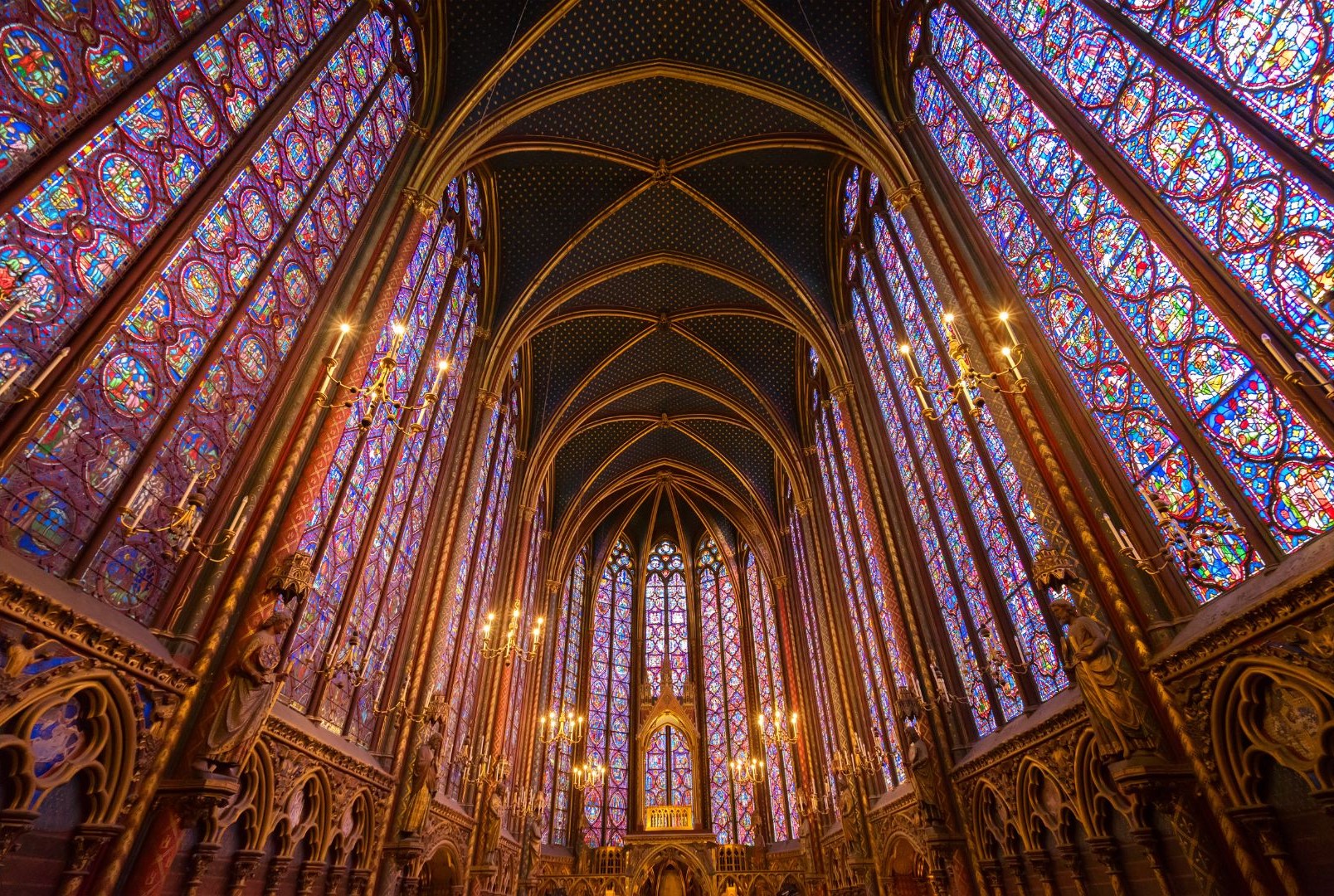
Practical Information
Cost: 11.50€, free for visitors under 18
From 1 April to 30 September: 9:00 am to 7:00 pm
From 1 October to 31 March: 9:00 am to 5:00 pm
Closed 1 May, 25 December and 1 January
Saint-Denis, Saint-Sévérin and the Sainte-Chapelle are just a few of the gothic glories to be admired and enjoyed as we patiently wait for artisans and engineers to complete their painstaking work at Notre-Dame.
